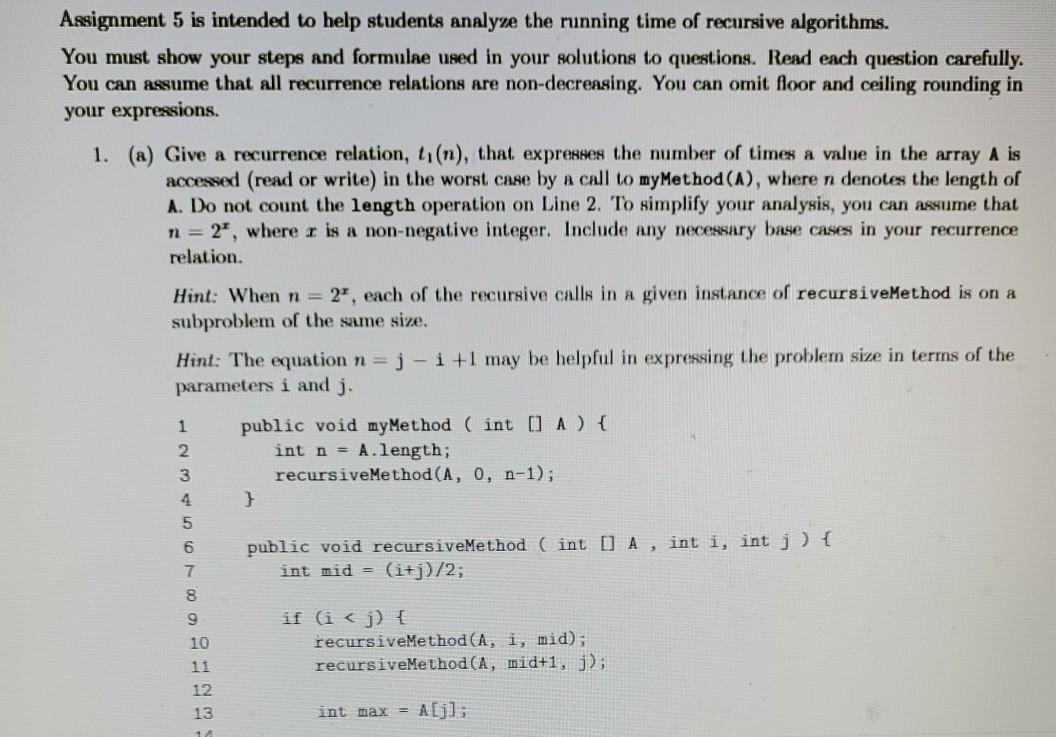Answered step by step
Verified Expert Solution
Question
1 Approved Answer
Assignment 5 is intended to help students analyze the running time of recursive algorithms. You must show your steps and formulae used in your solutions



Assignment 5 is intended to help students analyze the running time of recursive algorithms. You must show your steps and formulae used in your solutions to questions. Read each question carefully. You can assume that all recurrence relations are non-decreasing. You can omit floor and ceiling rounding in your expressions. 1. (a) Give a recurrence relation, (n), that expresses the number of times a value in the array A is accessed (read or write) in the worst case by a call to myMethod(A), where n denotes the length of A. Do not count the length operation on Line 2. To simplify your analysis, you can assume that n=2", where r is a non-negative integer. Include any necessary base cases in your recurrence relation. Hint: When n=2", each of the recursive calls in a given instance of recursiveMethod is on a subproblem of the same size. Hint: The equation n = j - i+1 may be helpful in expressing the problem size in terms of the parameters i and j. 1 public void myMethod (int OA) { 2. int n = A.length; 3 recursiveMethod(A, 0, n-1); 4. } 5 6 public void recursiveMethod (int DA, int i, int j ) { 7 int mid = (i+j)/2; 8 9 if (i
Step by Step Solution
There are 3 Steps involved in it
Step: 1

Get Instant Access to Expert-Tailored Solutions
See step-by-step solutions with expert insights and AI powered tools for academic success
Step: 2

Step: 3

Ace Your Homework with AI
Get the answers you need in no time with our AI-driven, step-by-step assistance
Get Started


